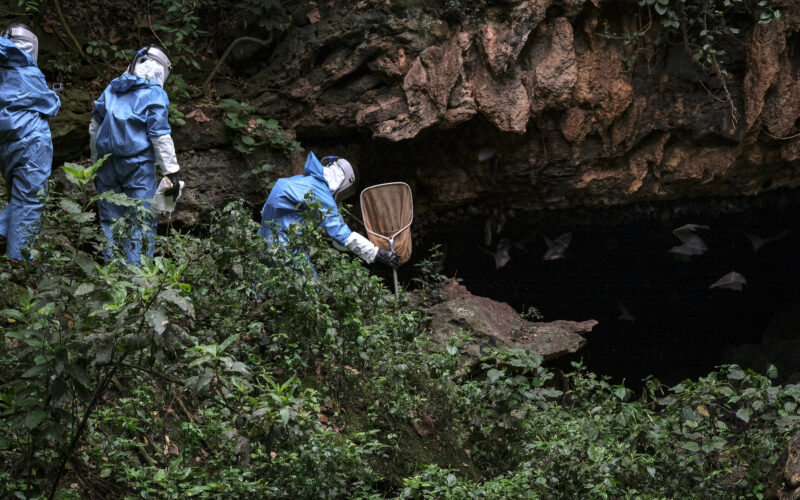What to Know About the Marburg Virus Disease: On June 27 and 28, Ghana reported the deaths of two people who were not related to each other. This was the first outbreak of the Marburg virus sickness in the country. The public was already concerned because of the ongoing fight against the coronavirus pandemic, and they were recently worried by the spread of monkeypox and a new case of polio. The news of a new outbreak of a deadly disease caused by viral infections added to their existing anxieties.
In an effort to bring the infection under control as quickly as possible, medical professionals and other public health professionals throughout the nation immediately began looking for people who might have been exposed to the virus and conducting investigations into the factors that contributed to its rapid spread. Researchers focusing on public health in Ghana and other regions of the world have reported that there is currently no evidence to suggest that the virus has spread further.
Table of Contents
What is Marburg virus disease?
In 1967, Marburg was identified for the first time when outbreaks of hemorrhagic fever occurred simultaneously in laboratories in Marburg and Frankfurt in Germany, as well as in Belgrade, in what is now the country of Serbia. The outbreaks were connected to African green monkeys that had been imported from Uganda. According to the World Health Organization, further cases of the disease have now been discovered in the countries of Angola, the Democratic Republic of the Congo, Kenya, South Africa, and Uganda. The instances that occurred in Ghana in the previous month were the very first ones to be recorded in that country.
Experts in the field of medicine have stated that there are no vaccinations or antiviral medicines available for the condition; nonetheless, hydrating patients and addressing their particular symptoms can increase their chances of survival.
According to the World Health Organization, this disease is caused by a distinct virus than Ebola; but, clinically, its dissemination, symptoms, and course are quite similar to those of Ebola. In the instance of the Marburg virus, fruit bats are thought to be the hosts of the virus, despite the fact that researchers claim the virus does not make fruit bats sick. According to the Centers for Disease Control and Prevention (CDC), researchers believe that bats or other nonhuman primates are most likely to be the carriers of the Ebola virus. According to the World Health Organization (WHO), case fatality rates of Marburg have ranged from 24 to 88 percent, depending on which strain of the disease people catch and how cases are managed. Despite its limited geographic distribution, Marburg has shown to be devastating. The fatality rates associated with Ebola cases are almost identical.
According to the World Health Organization (WHO), the Marburg virus can be transmitted through direct contact with the blood, saliva, or other body fluids of an infected person. The infection can also be passed from person to person by contact with contaminated surfaces and objects, such as clothing or bedding.
What are the symptoms of Marburg virus disease?
Marburg is capable of causing a severe kind of viral hemorrhagic fever, which disrupts the natural ability of the blood to coagulate. According to the World Health Organization (WHO), the incubation period can last anywhere from two to 21 days, and symptoms might appear suddenly with high fever, severe headache, and severe malaise. Other symptoms may include aches and pains in the muscles, diarrhea, nausea, tiredness, and bleeding from the mouth, intestines, or other regions of the body.
According to the European Center for Disease Prevention and Control, the incubation period is not a time during which the Marburg virus can spread. According to the World Health Organization (WHO), individuals who are gravely ill typically pass away eight or nine days following the commencement of their symptoms.
“Mortality is really high,” said Dr. John Amuasi, who leads the global health and infectious disease research division at the Kumasi Center for Collaborative Research in Tropical Medicine in Kumasi, Ghana. The Kumasi Center for Collaborative Research in Tropical Medicine is located in Ghana. “And there is no asymptomatic Marburg,” the researcher continued.
According to health organizations, a patient can determine for certain whether or not they have Marburg by undergoing antibody, antigen, and polymerase chain reaction testing.
How many cases have there been this year?
This year, there have only been two confirmed cases of the deadly Marburg virus disease, and both of them were found in Ghana. According to Dr. Amuasi, the individuals who became infected with the virus were not related to one another, and they were located in various sections of the Ashanti region of Ghana. They both passed away.
According to him, both patients were male and were employed on farms. One was a farmhand of 26 years old who had just returned from working in a distant region of the country for the past few months, and the other was a subsistence farmer of 56 years old. After tracing the men’s contacts, the local authorities came to the realization that they had not been in the same locations at the same time.
The Ashanti region is home to a large number of fruit bats, which are known to be the virus’s vectors of transmission.
How does the outbreak compare to previous ones?
According to the Centers for Disease Control and Prevention (CDC), an outbreak of the disease claimed the lives of more than 200 people in Angola between the years of 2004 and 2005, and more than 100 people died of the disease in the Democratic Republic of the Congo between the years of 1998 and 2000. In previous Marburg epidemics, the number of cases that were reported was significantly lower.
According to the Centers for Sickness Control and Prevention (CDC), there was one instance in Guinea in 2021, which ended in the death of that person, and three of the four people who had the disease in Uganda in 2017 also died from it.
According to Dr. Francis Kasolo, the World Health Organization’s representative in Ghana, the investigation into how the two people in Ghana became infected with the virus is ongoing.
According to Dr. Kasolo, “the current inquiry is not solely focusing on interactions.” “Also, we are going back over the medical records in these regions to check and see if there were any unusual occurrences in terms of patients that came in with symptoms. Because of this, we are hesitating before declaring that this is a one-time only occurrence.
Should we be worried?
According to Dr. Jonathan Towner, who is in charge of the Virus-Host Ecology Section at the Centers for Disease Control and Prevention, the C.D.C. office in Ghana is collaborating with the local health authorities to provide assistance with testing and epidemiological investigations.
According to Dr. Towner, the population of the United States does not face a particularly high risk of exposure.
“At this time, the danger chance of certain passengers, for example, coming into the nation with Marburg right now is really, extremely low,” he added. “It’s a very, very low-risk probability.”
According to Dr. Amuasi, the response from the public health sector has been appropriate and transparent up until this point. A close eye was kept on the contacts of the two people who passed away from the infection, particularly in the 21 days that followed their deaths.









